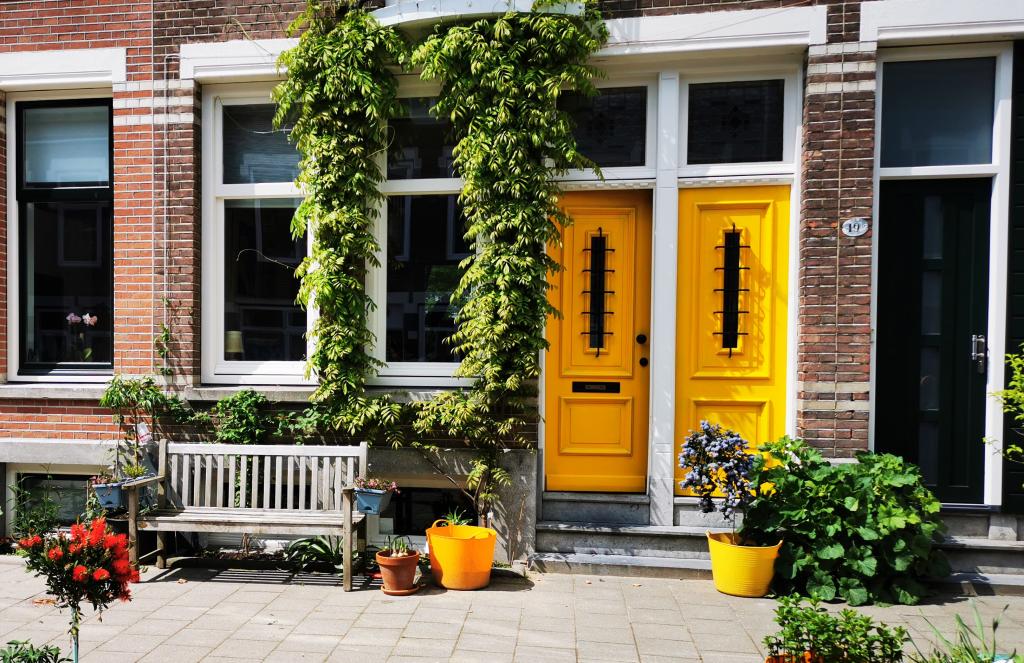Thessaloniki gets ready for its metro launch in November
The underground rapid transit lines have been under construction for almost two decades due to various project delays
 TheMayor.EU logo
TheMayor.EU logo 
Replacing concrete with greenery can be the key to making our cities more resilient to climate change, Source: NK Tegelwippen
The derby between Amsterdam and Rotterdam is highly anticipated
From 30 March to 30 September, the Netherlands is once again hosting the NK Tegelwippen competition. Its goal is to replace as many pavement tiles with greenery as possible, and thereby – make the urban environment more liveable and resilient to climate change.
The competition is between teams, which raises the bar even more. 2021 will see important derbies take place between municipalities.
This year, over 40 Dutch municipalities will compete in the second edition of NK Tegelwippen. All over the country, enthusiastic city councillors will remove the first tile of their municipality and call on residents to do the same.
To become part of a team, everyone can register at nk-tegelwippen.nl and contribute to his municipality’s success. They will then have to upload an image showing before and after photos of their façade gardens where the number of tiles removed can be tracked.
Among the most exciting competitions are those between Amsterdam and Rotterdam, Leeuwarden and Groningen, Breda and Tilburg, Deventer and Zwolle and Leiden and Haarlem. The pairs have challenged each other prior to the contest.
However, those who live in a municipality that has not joined the contest, also have the chance to participate. Their result will automatically be added to the Tile Balance and count towards the National Tile Counter.
In the end, the municipality that gets rid of the most tiles per inhabitant wins the prestigious Golden Shovel. The most active residents also have a chance to win a prize at the beginning of October.
The initiative is supported by the Ministry of Infrastructure and Water Management, among others. Its first edition led to the removal of some 95,000 paving stones.
The organisers remind that beyond the team rivalry, there is also a shared goal - when tiles make way for grass and flowers, cities and villages become more climate-resilient and biodiverse. Increased greenery prevents flooding, provides coolness in times of heat, retains water in times of drought and increases the living space for plants and animals.
Finally, a green living environment is good for the state of mind.

The underground rapid transit lines have been under construction for almost two decades due to various project delays

Now you can get your wine in Talence by paying directly in Bitcoin

That’s because the state has to spend money on updating the railway infrastructure rather than subsidizing the cost of the popular pass

Rethinking renewable energy sources for the urban landscape

The examples, compiled by Beyond Fossil Fuels, can inform and inspire communities and entrepreneurs that still feel trepidation at the prospect of energy transition

Now you can get your wine in Talence by paying directly in Bitcoin

The 10th European Conference on Sustainable Cities and Towns (ESCT) sets the stage for stronger cooperation between the EU, national and local level to fast track Europe's transition to climate neutrality.

At least, that’s the promise made by the mayor of Paris, Anne Hidalgo

The underground rapid transit lines have been under construction for almost two decades due to various project delays

At least, that’s the promise made by the mayor of Paris, Anne Hidalgo

Hostal de Pinós is located in the geographical centre of the autonomous region

Despite its church-y name, the district has long been known as the hangout spot for the artsy crowds

Urban dwellers across the EU are having a say in making their surroundings friendlier to people and the environment.

Forests in the EU can help green the European construction industry and bolster a continent-wide push for architectural improvements.

Apply by 10 November and do your part for the transformation of European public spaces

An interview with the Mayor of a Polish city that seeks to reinvent itself

An interview with the newly elected ICLEI President and Mayor of Malmö

A conversation with the Mayor of Lisbon about the spirit and dimensions of innovation present in the Portuguese capital














